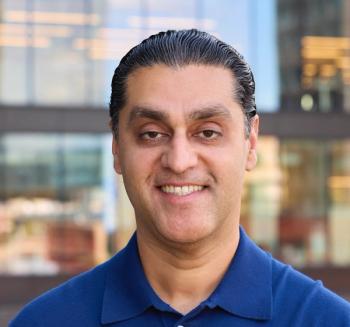
Using voice technology to connect with patients | Data Book podcast
In the latest episode of Chief Healthcare Executive’s podcast, we talk with Freddie Feldman of Wolters Kluwer Health about patient engagement and helping patients get the care they need.
Hospitals are using technology in different ways to engage their patients.
Freddie Feldman of Wolters Kluwer Health is helping health systems make the connection. He’s the director of voice and conversational interfaces at Wolters Kluwer, and he talks about patient engagement in the latest episode of Data Book, a podcast from Chief Healthcare Executive®.
Feldman leads a team of designers, builders and researchers to devise technologies, such as phone outreach to help hospitals connect with their patients and make sure they are getting the care they need. For patients who have recently left the hospital, they’ll get calls to make sure patients are getting the care that they need.
As Feldman says, “This isn’t a ‘press one’ and ‘press two' kind of thing. This is having a conversation on the phone with a voice interface. So we call you, you know, making sure you have your follow up appointments scheduled. You have all your medications.”
Hopefully, those calls, and the increased patient engagement, can reduce the risk of complications, and potentially, a return trip to the hospital.
Feldman’s team builds and scripts those calls. And he says, hospitals and other healthcare providers are turning to their service to help improve their follow-up care to patients, at a time when hospitals have struggled with staffing shortages or financial difficulties.
Health systems can use the technology to ask patients to check their weight, or if a patient with COPD has had to use an inhaler.
Other solutions involve outreach calls to remind patients about upcoming screening appointments, such as mammograms. Patients will be asked when they had their last mammograms.
The technology doesn’t involve a synthetic voice.
“This is a human recording,” Feldman says. “And we feel that that really conveys the empathy that's necessary in these types of calls.”
There are no apps required, making the technology easily accessible for patients, especially for older patients.
For younger patients who don’t answer calls from unfamiliar numbers, it can be a little challenging at times. Patients will get a message, and will usually return the call.
As hospitals and health systems use the technology to reach out to patients, they need to consider the language they are using in the scripts. Sometimes, a health system will suggest language that could be confusing or a little complex for patients. Feldman says they stress to care teams to use simple language.
“Don't use the medical jargon that you're used to,” Feldman says.
“They’re using all of these terms … If I have to look them up, I can't say this to a patient over the phone, because they're not going to get it,” he says.
Feldman also talks about getting on his “soapbox” to push for different voices, including the addition of voices from other races and ethnicities.
“There's lots of patients out there and not everybody looks the same,” Feldman says.





























































































